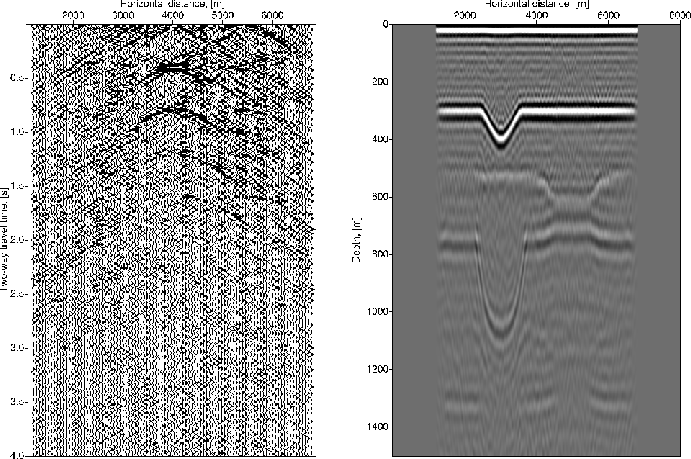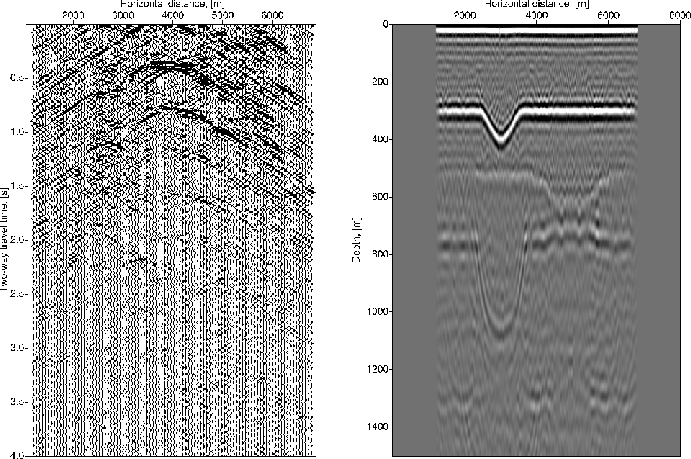




Next: Acknowledgments
Up: Artman et al.: Migration
Previous: Simulated reflection versus migration
We showed the theoretical justification for directly migrating passive seismic noise
recordings. This method is based on the shot-profile migration
procedure, but is applied to transmission data. The results from the
direct migration of passive data and from the migration of simulated
reflection shot gathers are identical. Depending on the objective (to
have intermidiate results or not) one or the other can be used. The
numerical examples showed that while with decreasing number of
subsurface noise sources and shorter noise recordings drastically
reduced the quality of the simulated reflection response, the
migration process still delivers good results.
Lastly, correlation of each trace with every other trace produces N shot
gathers each with N traces from a survey with N receivers. If
correlations are performed in the frequency domain, N2 traces must
be inverse Fourier transformed after multiplication to produce the
shot-gathers. This requirement is especially onerous
when the record length is at least minutes long. Then,
another Fourier transform of N2 traces, though now only seconds
long, must be performed to make a f-k based migration. Finally, the
increased I/O associated with migrating N shots in a shot-profile
migration are substantial compared with the single shot, even with
many more frequencies, for direct migration utilizing an algorithm
parallelized over frequency.
dx_100m
Figure 3 Left: Simulated reflection
shot panel from 6 minutes long noise recordings with 57 regularly
distributed subsurface sources with a simulated shot position at
x1=4000 m. Right: Result from direct migration of 6 minutes long
noise recordings with 57 regularly distributed subsurface sources.
 dx_500m
dx_500m
Figure 4 Left: Simulated reflection
shot panel from 6 minutes long noise recordings with 11 regularly
distributed subsurface sources with a simulated shot position at
x1=4000 m. Right: Result from direct migration of 6 minutes long
noise recordings with 11 regularly distributed subsurface sources.
 dx_1000m
dx_1000m
Figure 5 Left: Simulated
reflection shot panel from 6 minutes long noise recordings with 6
regularly distributed subsurface sources with a simulated shot
position at x1=4000 m. (b) Result from direct migration of 6
minutes long noise recordings with 6 regularly distributed
subsurface sources.






Next: Acknowledgments
Up: Artman et al.: Migration
Previous: Simulated reflection versus migration
Stanford Exploration Project
5/23/2004


